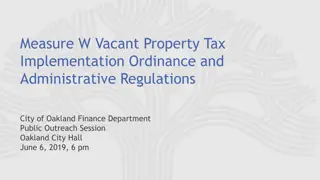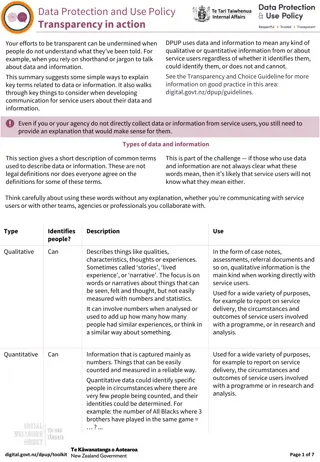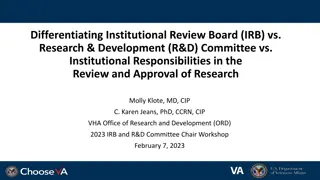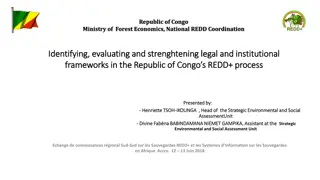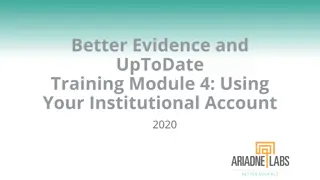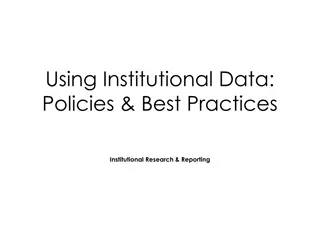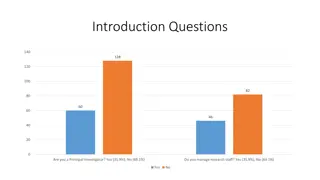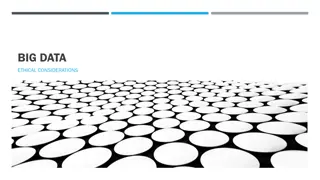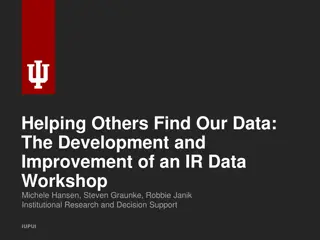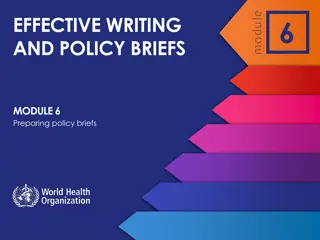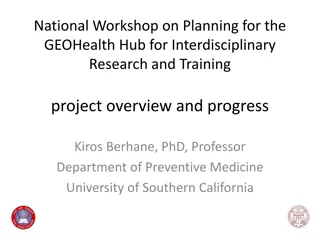Utilizing Institutional Data to Enhance University Policy: Insights from Oakland University Research
Extracting valuable insights from institutional data, the Office of Institutional Research and Assessment at Oakland University conducts various research activities to improve university policy. Through surveys and internal research, they address important questions like student workload, financial aid impact on retention rates, and success of students with AP credits. The office also compiles official university statistics and conducts the CIRP Survey to understand student behaviors and values. Explore more at www.oakland.edu/OIRA.
Download Presentation

Please find below an Image/Link to download the presentation.
The content on the website is provided AS IS for your information and personal use only. It may not be sold, licensed, or shared on other websites without obtaining consent from the author. Download presentation by click this link. If you encounter any issues during the download, it is possible that the publisher has removed the file from their server.
E N D
Presentation Transcript
Do OU Students Work Too Much? And Other Questions Using Institutional Data to Improve University Policy Reuben Ternes OIRA October, 2013 Contact: ternes@oakland.edu
OIRA Office of Institutional Research and Assessment We have lots of cool data about OU students. Our primary job is to conduct research about OU students, and to disseminate this information to the campus community. We re also in charge of some assessment related activities. www.oakland.edu/OIRA OIRA What?
We have two primary types of research 1) Surveys Graduation Survey Student Satisfaction Surveys NSSE (Nessie) CIRP CLA (Collegiate Learning Assessment) 2) Internal Research Do our need-based financial aid policies improve retention rates? Should all students take 16 credits their first semester, regardless of their ACT score? Do students that get AP credit for the first course in a sequence have just as much success as students that take the entire sequence here at OU? What Kind of Research?
We also compile the university s official statistics. Student Profiles (i.e., who are OU students?) Retention Rates Graduation Rates Progress to Degree Enrollment data Degree data Distribution of Grades All of this information is available on our website: www.oakland.edu/OIRA What Else Does OIRA Do?
CIRP = Cooperative Institutional Research Project The CIRP Survey asks students a whole bunch of questions about Behaviors Attitudes Values Expectations Also covers some demographic data Usually taken during freshmen orientation Mostly, we find that we are more similar to other institutions than we are dissimilar. CIRP Survey
Drank beer during senior year 60 50 40 30 OU National 20 10 0
OU students political views 60.0% 50.0% 40.0% 30.0% OU 20.0% Peer 10.0% 0.0%
National Survey of Student Engagement (NSSE: pronounced nessie ) NSSE Survey College student survey that assesses the extent to which students engage in educational practices associated with high levels of learning and development Administered every two years. (Sometimes more often). Complete data is available on OIRA s website. All data is for 1st year students unless otherwise noted. Peer comparison is other public institutions in our regional area (Great Lakes).
Time Spent Preparing for Class 30.0% 25.0% 20.0% OU 15.0% Peer 10.0% 5.0% 0.0% 1-5 6-10 11-15 16-20 21-25 26-30 30+
Quality of Interactions with Advisors 40.0% 35.0% 30.0% 25.0% 20.0% OU 15.0% Peer 10.0% 5.0% 0.0%
What Can NSSE Tell Us? Full NSSE results are displayed on our website. It s super fun to explore And it can help with various class projects. For Example: Percentage of Students that Report Working more than 15 Hours Off-Campus per Week (2013 NSSE) Class OU Peer National Norm Freshmen 28% 16% 18% Seniors 59% 40% 41%
Another Way of Looking at the Same Data Percentage of Students that Report Working Zero Hours Off-Campus per Week (2013 NSSE) National Norms 68% Class OU Peer Freshmen 42% 69% Seniors 25% 44% 44%
Periodically, OIRA releases some of its internal research, in a format that we call Spotlight on OU. All of our Spotlights can be found online. One of these Spotlights uses NSSE data to show the relationship between retention rate and the number of reported off-campus working hours for freshmen students. There are 4 main findings that I want to talk about today. Is Working Off- Campus Bad?
Finding #1 Is there a relationship between first-year retention rates and off-campus working hours? Not really. Or, if there is, the impact is relatively small. (2007 & 2009 NSSE Data) (2013 NSSE Data shows the same basic patterns, though retention rate is higher for all groups). Weekly Hours Retention Rate N Zero 1-5 6-10 11-15 16-20 21-25 26-30 31+ Totals 86% 91% 87% 84% 86% 85% 82% 86% 86% 410 87 100 150 176 123 78 57 1181
Finding #2 Is there a relationship between off-campus working hours and the rate that students return with sophomore status? Yes. ( 2 = 14.7, p < 0.05, df = 7) Students that work more hours do not appear to accumulate as many credits. (2007 & 2009 NSSE Data) (2013 NSSE Data shows the same basic patterns, though sophomore return rate is higher for all groups). Weekly Hours Return as Sophomore N Zero 1-5 6-10 11-15 16-20 21-25 26-30 31+ Totals 63% 76% 68% 69% 67% 62% 55% 53% 65% 410 87 100 150 176 123 78 57 1181
Finding #3 Students that reported more working hours, also reported taking less credits during their first term. This isn t really very surprising. (2007 & 2009 NSSE Data) Weekly Hours Ave. 1st Term Credits N Zero 1-5 6-10 11-15 16-20 21-25 26-30 31+ Totals 14.7 14.7 14.5 14.6 14.2 14.1 14.3 13.5 14.4 410 87 100 150 176 123 78 57 1181
Finding #4 What about GPA? There does not appear to be any relationship between off-campus working hours and student GPAs.
The main issue with students that work many hours, is that their progress towards graduation is significantly slower. Instead of taking 4 years, they take 6. Some research (both internal and external) suggests that accumulating credits too slowly may ultimately deter students from completing their degree. It is difficult to know the life situations of all of our students, so, the question might not be answerable. However, from a university perspective, we want to encourage students to complete as many credits as they can, each semester. Internal research also suggests that, when we set higher expectations, students tend to meet those expectations. Do OU Students Work Too Much?




